Jersey City Product Liability Lawyers
We are a team of highly skilled personal injury attorneys. If you have a bodily injury legal issue in or around Jersey City, New Jersey, we can help. Call us today for a free consultation.
Jersey City Product Liability Lawyers
Consumers rely on designers and manufacturers to provide safe products. These goods can cause serious or even fatal injuries when they malfunction, break, or fail to explain how to use them safely. Worse yet, a defectively designed product can even hurt you when it performs exactly as intended.
Fortunately for consumers, New Jersey law imposes strict liability on manufacturers and sellers for injuries caused by defective products. Jersey City product liability lawyers from Garces, Grabler & LeBrocq have additional tools, like breach of warranty and negligence, that they can use against product makers to fight for compensation for your injuries.
What Is Product Liability?
Product liability is the legal obligation imposed on every supply chain member for the products they manufacture, distribute, and sell. The theory is that consumers don’t know how the products they buy are designed or manufactured. More importantly, they have no control or input into the safety features of those products.
As a result, the law imposes a legal duty on those who have control to protect the safety of their customers. This legal duty has three parts. First, they must exercise reasonable care in designing and making products. When they fail to do so, they bear liability for any resulting injuries.
Second, they have a contractual duty to supply a product that is fit for its intended purposes. If a product injures the customer, then the supplier, vendor, retailer, or distributor has breached this contractual duty.
Third, they have a strict duty to refrain from putting defective products into the supply chain. New Jersey law imposes liability on them for injuries caused by the product’s defects after it leaves their control.
Product liability claims usually assert all of these legal theories because they cover different aspects of the supply chain and may result in different types of damages.
Common Types of Product Liability Cases
Most businesses fall within the scope of a product liability claim with a few exceptions. Customers might not have a product liability claim against businesses that only provide services, like financial advisors or banks.
However, businesses that provide products as part of their services, like building contractors or restaurants, are usually liable for the products they supply.
Thus, you and your Jersey City product liability lawyers can pursue a personal injury case for almost any type of product, including the following:
DRUGS
Both prescription and over-the-counter drugs can injure consumers. When they cause side effects described in the product warnings, the injured patient might have difficulty pursuing a claim. But the medication might be defective if it causes:
- Unknown side effects
- Known side effects that were not listed in the warnings
- Drugs with no safe use
- Adulterated drugs
- Ineffective drugs
The U.S. Food and Drug Administration can order manufacturers to recall dangerous drugs from the market. Manufacturers can also voluntarily recall drugs. But injured consumers don’t need to wait for a recall to pursue a claim. They can file a claim as long as they have evidence of the drug’s defect.
BUILDING MATERIALS
Building materials can have many types of defects. For example, a material might be defective due to any of the following:
- It does not have the advertised characteristics, such as strength
- Installing it endangers workers
- Spending time around it endangers building occupants
An example of dangerously defective building materials includes asbestos insulation. This product was dangerous to installers and building occupants.
MOTOR VEHICLES AND AUTO PARTS
Motor vehicles, including cars, pickup trucks, SUVs, vans, and semi-trucks, have tens of thousands of parts. When a vehicle comes with defective parts, or you install a defective replacement part, you can suffer a serious injury. Some ways a defective vehicle part might affect you include:
- Creating a fire risk
- Causing you to lose control of the vehicle
- Failing to protect you in a crash
- Worsening the effects of an accident
These issues can occur on a massive scale. In 2022 alone, the National Highway Transportation Safety Administration (NHTSA) issued over 932 vehicle safety recalls, affecting nearly 31 million vehicles.
Not all of these recalled vehicles will support a product liability claim since many were repaired before anyone was injured. However, these statistics illustrate the scope of the danger posed by defective vehicles and vehicle parts.
MEDICAL DEVICES
Defective medical devices, like defective drugs, can injure patients when they malfunction or cease to function. Medical devices include implants, like insulin pumps and pacemakers. They also include diagnostic devices, such as X-ray machines. Finally, it covers tools used by physicians, including forceps and catheters.
Depending on the device’s purpose, you might need corrective surgery to remove the defective device and implant a new one. Worse yet, the patient’s family members might not find out about the defective device until after their loved one dies from the defect.
TOYS AND CHILDREN’S PRODUCTS
Products intended for use by children pose unique risks. When designing and manufacturing toys and children’s products, companies must avoid hazards such as:
- Choking
- Swallowing
- Poisoning
- Burning
- Cutting
- Electrocuting
- Tripping
- Crushing
- Strangling
Since children under a certain age cannot read, companies must handle warnings differently for many of these products. They must also anticipate potential types of misuse and design the product against them.
ELECTRONICS AND HOME APPLIANCES
Electronics and kitchen appliances can electrocute, burn, or mangle users when the manufacturer designs or manufactures them with a defect. They may also be dangerous when the manufacturer fails to instruct users on how to use them safely.
The scope of danger can also extend beyond the purchaser. A defective electronic device or home appliance can ignite a fire that kills or injures the purchaser’s family members or neighbors.
CHEMICALS
Manufacturers have released many dangerous chemicals that have injured or killed users. Some examples of defective chemical products include:
- Pesticides
- Paints
- Solvents
- Cleaners
- Cosmetics and hair products
The difficulty with cases involving chemical exposures is proving causation. When you develop cancer in your 40s, you might suspect it was caused by exposure to toxic chemicals.
But tracing it back to a specific product might pose difficulties. You and your lawyer may need to scour the scientific literature to identify a possible culprit for your disease.
Strict Liability for Defective Product Injuries
In old English and American common law, product liability claims depended on contract law and negligence law. The problem with contract law is that the purchaser only had a contract with the seller. They couldn’t reach the manufacturer that made the defective product and put it into the stream of commerce.
Additionally, when a claim relies on a contract, non-buyers who got injured had no injury claim. For example, if an employer bought a power tool but an employee suffered electrocution, the employee’s family members had no injury claim because they did not buy the product that killed their loved one.
A different problem came with negligence claims. Negligence requires injured victims to prove that the at-fault party knew or should have known of the risk they created. But when you apply this standard to a business, things get murky. Who has to act negligently, and how can someone outside the company get access to inside information to prove negligence?
Strict liability was created to solve these problems. Strict liability means an injured user can pursue a claim for injuries caused by defective products regardless of whether the company:
- Intended the defect
- Was aware of the defect
- Tested products to try to find defects
Under strict liability, the company’s reasonableness in avoiding, finding, or fixing defective products is irrelevant. Instead, the injured person only needs to prove the product was defective when it left the manufacturer’s hands and caused the person’s injury.
No Fee Unless
GGL Wins
How To Prove Product Liability
Your lawyer will almost always begin a product liability claim by notifying the manufacturer and retailer of your injury. They will inform their insurance carriers. Your attorney will probably file a product liability claim with them and try to settle your case before filing a lawsuit.
If the insurer refuses to settle the claim on fair terms, you can file a lawsuit to continue your pursuit of compensation. In both your insurance claim and your lawsuit, your lawyer must provide evidence to support your case. This evidence will typically include:
- Pictures and videos of the product
- Your medical records
- An expert’s analysis of the defective condition
The claims your lawyer can assert include the following:
Strict Product Liability
Strict product liability requires proof of a defect and evidence that the defect caused your injury. Defects take three forms. You can assert any one or more of these three types of defects.
Design defects are built into the product. A product with a design defect has no safe use. An example of a product with a design defect is lawn darts. This game involved throwing weighted darts with long, sharp points into the air so they would stick into the ground.
Thus, lawn darts were dangerous even when they functioned exactly as designed. These darts killed three children before the government banned them.
Manufacturing defects happen when certain products fail to meet their design specifications due to problems at the factory.
The prime example of a manufacturing defect happened in the late 1990s to Bridgestone/Firestone tires. The tires had a sound design. However, problems at one factory produced an adhesive layer that was too thin.
During high-stress maneuvers, the tread would separate from the tire, causing the vehicle to lose traction and rollover.
Warning defects occur when the product and its packaging fail to:
- Describe how to use the product safely
- Warn against unsafe uses
- Describe and warn against known misuses
This type of defect is common in product liability claims against pharmaceutical products. When a drug can be misused, the label must warn against it. Suppose that a drug can make the patient drowsy. The label should warn patients not to drive or operate heavy machinery after use.
Once you prove the product had a defect and it caused your injury, you can recover economic and non-economic damages resulting from those injuries.
Breach of Warranty
Product liability lawyers can still use breach of warranty claims in many cases. The essence of this claim is that every product has an implied warranty of fitness for its intended purpose. If a product is not fit for its intended purpose, there would be no reason for the purchaser to buy it.
More to the point, a product should perform its intended purpose without injuring or killing the user. Part of its purpose is to function safely according to the warnings and instructions.
When the product does not perform its intended function safely, the manufacturer and seller breach their warranties to the purchaser. When your lawyer wins this claim, you can receive damages for breach of contract.
Negligence
Most personal injury claims rest on negligence law. Negligence occurs when a failure to exercise reasonable care injures someone. Negligence requires proof of four elements:
- Duty of care
- Breach of duty
- Damages
- Causation
The duty of care arises when the manufacturer puts a product into the stream of commerce. Once the product is out of its hands, the manufacturer cannot control how it is used. As a result, they take reasonable steps to ensure the product is safe for use.
If the manufacturer does something unreasonably dangerous, it breaches this duty. The best-known example of a breach of the duty of care happened in the way tobacco manufacturers packaged cigarettes.
Manufacturers were aware of a link between cancer and cigarette use. However, they deliberately suppressed warnings and even sought to mislead smokers about the risks despite knowing that these actions would injure or kill their customers.
What To Do if a Defective Product Has Injured You
When you get injured by a defective product, the steps you take could affect your legal rights. To give yourself the option to pursue a product liability claim, you should consider:
Seeking Medical Attention
Your top priority after suffering an injury is your health. Seek the level of medical help appropriate for your injury. If you need emergency care, call an ambulance. If you do not need emergency care, visit your doctor or an urgent care clinic.
A doctor’s visit helps in several ways, including:
- Creating a record of your accident
- Determining a treatment plan
- Uncovering any hidden injuries
You will use the records from your doctor’s visit to prove your injuries and how they happened.
Preserving the Product
The defective product may be the best evidence for your case. An expert witness can analyze the product and testify on your behalf about its defects.
Documenting the Accident
Take pictures and videos of the accident scene and your injuries. This evidence will help you prove your claim for product liability. They may also help you disprove any assertion that you misused the product and caused your injuries.
Contacting an Attorney
Large manufacturers have insurance policies for product liability claims. This is good news because the insurer has the money to pay claims. But insurers often use a strategy of delay, deny, and defend. An attorney can stand up to large insurers and counter these tactics to keep your case on track.
Why Hire GGL?
Garces, Grabler & LeBrocq has represented injured clients since 1991. Over those 32 years, our Jersey City product liability attorneys have recovered over $1 billion in injury compensation.
When you hire us, you will have knowledgeable, aggressive, and professional representation. We understand the challenges of fighting huge manufacturers and their insurers. Contact us online or call 1-800-923-3456 to discuss your case and how we can help you pursue compensation.
No Fee Unless
GGL Wins
We've got you covered.
We are available 24/7/365

OFFICIAL PARTNER OF RUTGERS ATHLETICS
Jersey City Product Liability Lawyers
Address: 3000 John F. Kennedy Blvd. Suite 311 Jersey City, NJ 07306
Phone: (201) 695-1000
Open 24/7 365
Office:
8:30-6:00 Monday
8:30-6:00 Tuesday
8:30-6:00 Wednesday
8:30-6:00 Thursday
8:30-6:00 Friday
Recent GGL Wins
Medical Malpractice
A 30-year-old pregnant woman went into labor. The doctor failed to take proper steps in the baby’s delivery, making the mother wait in the hallway for ten hours while the baby’s heart rate began to drop. The baby was delivered via C-Section; he was blue from lack of oxygen resulting in Cerebral Palsy.
$14 Million
Verdict
Construction Accident
Mediation award resulting from an industrial explosion causing disfiguring burns and severe orthopedic injuries.
$7,8 Million
Verdict
Auto Accident
31-year-old man who was cut off by another car causing his car to flip over. He sustained head injuries, facial injuries, and half of his pinky finger was amputated.
$3 Million
Verdict
No Fee Unless
GGL Wins
Request A Free Consultation
We've got
You covered
We are available 24/7/365

